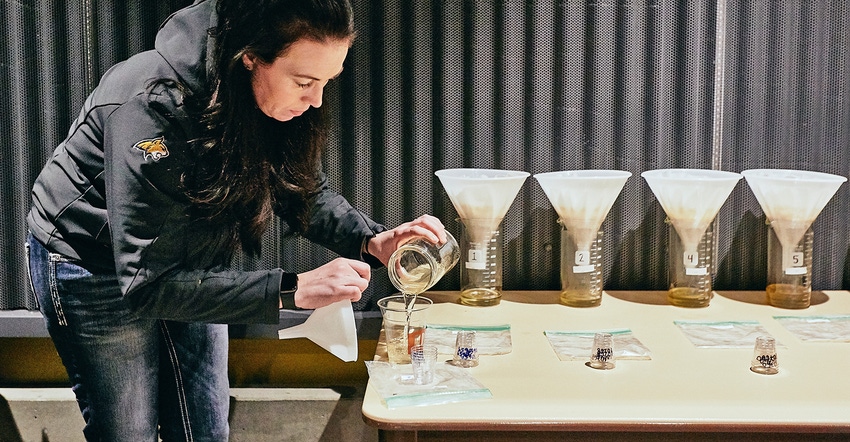February 20, 2019

There’s a key component in the world of craft beer making that’s getting rising attention. Malting barley and the malting process offer opportunities, and Montana State University is engaging in the industry.
Recently, the university conducted the 2019 Craft Malt Conference, capping a smaller, weeklong class where participants learned about each step in the malting process. Malting, which involves soaking and partially germinating grain, and then drying it to preserve the resulting sugars and enzymes, can help determine the final product — from a pilsner to a Scotch ale. And more subtle variations in the process can product unique flavors in craft beer.
Hanna Turner, one of the malting’s class’s instructors, and a research associate in MSU’s College of Agriculture, notes that craft malting is in a similar situation as craft brewing was a decade ago. “There’s lots of excitement,” Turner says. “Brewers are interested in sourcing their ingredients locally, so they’re looking into crafted malt,” which is done in smaller batches with greater attention to the source of grain.
During the conference, there was a tasting of nine beers produced by Montana brewers using craft malt from around the country.
Wide-ranging attendees
Both the conference and the class, which drew attendees from as far away as Australia and Italy, were organized by the North American Craft Maltsters Guild. A major draw for holding the event in Bozeman, Mont., was MSU’s Malt Quality Lab, which is one of only two such labs in the country that offers its services to independent craft maltsters, according to Jen Blair, executive director of the North Carolina-based maltster’s guild. Attendees toured the lab as part of the activities.
Blair notes that for many, this was the first chance they had to see a malt quality lab.
Turner, who is director of the lab, says a growing interest in craft malt is keeping her busy. “We’re seeing more and more people from around the region requesting our services,” she says.
Montana has two craft malting facilities in operation; another larger facility is under construction in Butte.
The barley industry has seen a major change. A crop that was once raised as animal feed is now mostly sold for malting, and it fetches nearly double the price as when it was mostly fed to animals. Most of the barley in Montana heads to large facilities like Malteurop’s plant in Great Falls.
Jamie Sherman, who directs MSU’s barley breeding program, works with the malt lab to select the best barley breeding lines. The program targets varieties best tailored to malting. “It has really helped our ability to make better malt barley,” she says.
A look at the lab
MSU is home to the state’s first public Malt Quality Lab, and it’s the only lab in the Northern Great Plains region that can provide a quality analysis of barley malt used in the craft brewing, and human and animal food industries.
Funded largely through checkoff funds from the state’s wheat and barley growers, the lab also gets added support from the National Brewers Association and the Montana Agricultural Experiment Station.
The facility is outfitted with state-of-the-art analysis equipment that can determine overall quality, enzyme potential, starch availability and protein content of barley malt.
The lab also allows the MSU Barley Breeding Program to process data points of malt barley six times faster than using a national lab — the closest of which is in Wisconsin, 2,000 miles away. You can learn more about the lab and its work by visiting MSU’s Malt Quality Lab webpage.
Source: Montana State University. The source is solely responsible for the information provided and is wholly owned by the source. Informa Business Media and all its subsidiaries are not responsible for any of the content contained in this information asset.
You May Also Like




